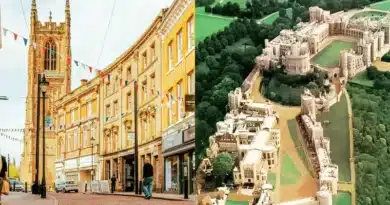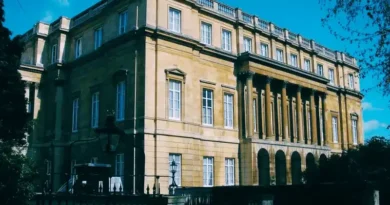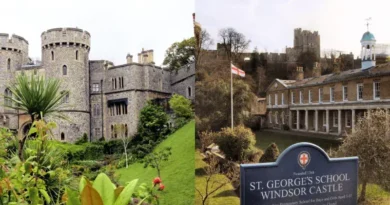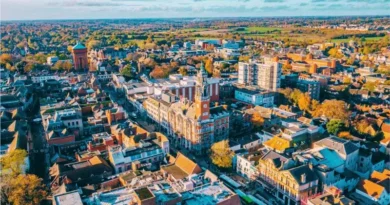10 Best Spots To Take The Windsor Castle Photos
Capturing the majesty of Windsor Castle is a rewarding experience for photography enthusiasts. Here are the 10 best locations to consider:
- The Long Walk: This iconic, tree-lined avenue stretches approximately 2.64 miles from Windsor Castle to the Copper Horse statue. It offers a direct and unobstructed view of the castle, making it ideal for photography, especially during sunrise or sunset.
- Windsor Great Park: Adjacent to the castle, this expansive park provides varied perspectives of the castle amidst lush greenery. Snow Hill, in particular, offers elevated panoramic views.
- The River Thames: Photographing the castle from the banks of the River Thames provides unique water-reflected shots. The Thames Path near Alexandra Gardens is particularly picturesque.
- Alexandra Gardens: Located near the town centre, these beautifully landscaped gardens offer charming views of the castle across the river, framed by vibrant flora.
- Windsor and Eton Riverside Station: This Victorian-era railway station provides architectural contrasts in your photographs, with the castle visible in the background.
- Datchet Village: A short distance from Windsor, this quaint village offers rural charm with castle views framed by open fields and rustic scenery.
- St. Leonard’s Hill: For elevated panoramic shots, this hill provides a vantage point capturing the entirety of the castle, especially striking at sunset.
- Inside the Castle Grounds: With an entrance ticket, visitors can explore the grounds, offering numerous photo opportunities, including St George’s Chapel. However, photography inside the State Apartments is prohibited.
- Windsor Town Centre: The bustling streets of Windsor provide opportunities to capture the castle amidst urban life, blending historical architecture with contemporary scenes.
- The Copper Horse Statue: Situated at the end of The Long Walk, this statue of King George III offers a unique vantage point, with the castle visible in the distance.
Each location offers a unique perspective of Windsor Castle, catering to various photographic interests and styles.
Takeaways
Here’s a comparison table summarizing the 10 top external and internal photography locations at Windsor:
| Location | Key Features | Best Photography Tips |
|---|---|---|
| The Long Walk | Historic 2.5-mile tree-lined avenue, views of Windsor Castle | Early morning for soft hues, golden hour for rich tones, misty mornings for atmospheric shots |
| Windsor Great Park | 4,800-acre park with Snow Hill, Deer Park, and woodlands | Spring for fresh colors, autumn for golden hues, winter for dramatic contrasts |
| The River Thames | Views of the castle from the riverbank, reflections on water | Early mornings for still water reflections, include boats for dynamic compositions |
| Alexandra Gardens | Seasonal flower displays, landscaped paths | Use floral foregrounds for depth, shoot in spring/summer for vibrant colors |
| Windsor & Eton Riverside Station | Victorian architecture, contrast with medieval castle | Capture intricate ironwork, frame station with castle in background |
| Datchet Village | Rural landscapes with castle views | Contrast village charm with castle grandeur, capture open fields |
| St. Leonard’s Hill | Elevated panoramic views of Windsor Castle | Sunset for warm golden tones, wide shots for sweeping landscapes |
| Copper Horse Statue | Dramatic statue of King George III at the end of the Long Walk | Use as a leading line to the castle, experiment with different focal lengths |
| Castle Precincts | Open courtyards, ramparts, and historic stonework | Focus on intricate stone details, capture atmosphere with natural light |
| St George’s Chapel (Exterior) | Gothic architecture, pointed arches, stained glass windows | Maintain respectful distance, avoid flash, use angles to highlight grandeur |
Introduction
Windsor Castle, the world’s oldest and largest inhabited castle, has stood as a symbol of British heritage since its founding by William the Conqueror in the 11th century. Its architectural grandeur and historical significance make it a prime subject for photography enthusiasts. However, capturing its essence requires knowledge of permissible photography practices and the best external vantage points.
Photography Guidelines at Windsor Castle
Permitted and Restricted Areas for Photography
While the castle’s exterior and surrounding precincts offer ample photography opportunities, certain restrictions apply:
- Exterior Areas: Visitors are welcome to photograph and film for non-commercial purposes within the castle’s external precincts.
- Interior Spaces: Photography and videography are strictly prohibited inside the State Apartments and St. George’s Chapel. This policy is in place to protect delicate artworks and furnishings from potential damage caused by flash photography.
Etiquette and Best Practices
To ensure a respectful and enjoyable experience for all visitors:
- Respect Signage: Adhere to posted signs indicating photography restrictions.
- Avoid Obstruction: Avoid blocking pathways or disrupting other visitors while setting up shots.
- No Tripods Indoors: Even in areas where photography is allowed, using tripods or large equipment indoors is typically discouraged to prevent obstructions.
Top External Photography Locations
The Long Walk

Description and Historical Significance
The Long Walk is more than just zxc\ty,.\
a scenic route – it is a historical avenue that has evolved over centuries. Laid out in the late 17th century during the reign of King Charles II, this majestic, tree-lined boulevard stretches for nearly 2.5 miles from Windsor Castle to the Copper Horse statue. Its enduring historical ambience provides a dramatic setting, inviting photographers to capture both the castle’s architectural brilliance and the avenue’s poetic grandeur.
The symmetry and perspective offered by the Long Walk serve as a visual narrative of British heritage, making it an essential location for any photographic journey.
Best Times for Photography
Timing is everything when using the Long Walk as your canvas. The early morning light brings out soft shadows and delicate hues, perfect for a serene capture of the castle in its tranquil surroundings. Just before sunset, late afternoon or golden hour sessions infuse the scene with warm, rich colours and long shadows accentuating the castle’s intricate details.
For those who enjoy a touch of atmospheric drama, the misty mornings can also add a mysterious, almost ethereal quality to your images.
Windsor Great Park

Key Spots within the Park
Encompassing more than 4,800 acres, Windsor Great Park is a veritable treasure trove of natural beauty and diverse landscapes. Among its many gems, Snow Hill stands out as an elevated spot along the Long Walk, offering breathtaking panoramic views that incorporate both the castle and the surrounding woodlands. With its gentle roaming herds, the Deer Park uniquely blends wildlife and history, framing the castle against a backdrop of natural splendour.
The park’s expansive layout allows photographers to experiment with different angles and compositions, capturing the castle from a distance or focusing on intimate details framed by ancient trees.

Seasonal Considerations
The park is a dynamic environment that transforms with the seasons. In spring, the rejuvenation of nature is evident with budding flowers and fresh, vibrant foliage. Summer enhances this with lush greenery and the dynamic interplay of light and shadow, while autumn brings an array of golden hues and soft, diffused light that can transform a simple shot into a work of art. Winter, although quieter, offers a dramatic contrast as frosty scenes and bare branches provide a minimalist yet striking frame for the castle.
The River Thames

Optimal Riverbank Locations
The banks of the River Thames offer an entirely different perspective on Windsor Castle. Strategic spots along the river – such as the picturesque Windsor Promenade – present unobstructed views of the castle across the water. These locations are not only ideal for capturing the grand structure in its entirety but also provide a natural element that adds depth and serenity to your images.
Capturing Reflections and Water-Based Shots
Photographing from the Thames invites creative experimentation with reflections. Early morning is especially beneficial here, as the water tends to be calmer, allowing for crisp reflections of the castle and surrounding scenery. Incorporating elements like boats or even the gentle ripples of the water can lend a dynamic quality to your photographs, creating a sense of movement and life within the frame.
Alexandra Gardens

Floral Framing Techniques
Nestled close to the castle, Alexandra Gardens is a meticulously maintained haven that offers a peaceful retreat and a brilliant opportunity to frame your shots naturally. The well-tended flowerbeds, winding paths, and verdant lawns contrast the historical grandeur of Windsor Castle. Photographers can use these natural elements as foreground interest to add depth and visual appeal to their compositions.
Seasonal Blooms and Their Impact on Photos
Each season brings its own charm to Alexandra Gardens. In spring, the burst of colours from cherry blossoms and tulips can create a soft, romantic atmosphere. Summer sees the gardens in full bloom, with roses and dahlias offering vibrant pops of colour that enhance the castle’s stonework.
As autumn arrives, the gardens are transformed by the warm, earthy tones of chrysanthemums and fallen leaves. At the same time, winter presents a stark, minimalistic backdrop that can accentuate the dramatic lines of the castle.
Windsor and Eton Riverside Station

The Windsor and Eton Riverside Station is a transport hub and a piece of history with its own architectural charm. The Victorian design, complete with ornate ironwork and period features, provides a striking contrast when juxtaposed against the medieval architecture of Windsor Castle. This station offers creative photographic angles – capturing the interplay of light and shadow on the intricate details, or framing the station’s elegant façade with the castle looming majestically in the background.
It is an excellent spot for those who appreciate the dialogue between different eras in one shot.
Datchet Village

Just a short journey from Windsor, the quaint Datchet Village offers a taste of rural England that is both charming and picturesque. The village’s traditional cottages and open fields provide a rustic, unspoilt backdrop highlighting Windsor Castle’s magnificence. Photographers can capture wide, sweeping shots that contrast the simplicity of village life with the castle’s grandeur, thereby telling a story of England’s enduring heritage and pastoral beauty.
St. Leonard’s Hill

For those seeking sweeping vistas, St. Leonard’s Hill is a must-visit. This elevated vantage point offers panoramic views that encompass not only Windsor Castle but also the surrounding countryside. It is particularly popular during sunset when the castle is bathed in a warm, golden glow that accentuates its silhouette against a dramatic sky.
The hill provides the perfect balance between elevation and accessibility, making it an ideal location for both landscape and architectural photography.
The Copper Horse Statue

At the southern end of the Long Walk stands the Copper Horse statue, a striking depiction of King George III. This location is particularly effective for creating compositions that highlight symmetry and perspective. When positioned correctly within the frame, the statue can act as a powerful leading element that guides the viewer’s eye along the Long Walk to the castle. By experimenting with different focal lengths and angles, photographers can use the Copper Horse to add depth and a sense of historical narrative to their images.
Internal Photography Opportunities
Castle Precincts
Areas Open for Photography
While much of Windsor Castle’s allure lies in its external grandeur, the internal precincts also offer unique photographic opportunities. Outside of the restricted interiors, such as the State Apartments, many areas within the castle grounds are accessible to visitors. These include the courtyards, ramparts, and peripheral gardens where natural light and historic stonework create compelling compositions. These spaces allow photographers to capture the castle’s atmosphere and detail without compromising on preserving sensitive areas.
Notable Architectural Details
The castle’s architecture is replete with intricate details – from the ornate stone carvings to the heraldic emblems and majestic arches. These details provide endless opportunities for close-up photography, where each element tells its own story about the castle’s long and storied past. Photographers are encouraged to focus on these details, using them to illustrate the fusion of historical artistry with the enduring legacy of the British monarchy.
St George’s Chapel
Exterior Photography Guidelines
Although photography inside St George’s Chapel is restricted to protect its delicate interiors, the exterior of this architectural masterpiece remains accessible for photographers. The chapel’s Gothic design, with its pointed arches and stained glass windows, is a captivating subject in its own right. Visitors should be mindful of maintaining a respectful distance and using appropriate angles that capture the chapel’s grandeur without infringing on visitor privacy or disrupting the sanctity of the space.
Respectful Practices
Respect for St George’s Chapel’s historical and spiritual significance is paramount. Photographers should avoid using flash or any disruptive equipment near the chapel and adhere to any posted guidelines or instructions. The aim is to capture the beauty of the chapel’s exterior in a manner that honours its place in British history, ensuring that the images convey both its artistic and cultural importance.
Photography Tips and Techniques
Lighting Considerations
Lighting can make or break a photograph, especially when shooting a historic landmark like Windsor Castle. Natural light, particularly during the golden hours of early morning or late afternoon, enhances the textures and colours of the castle and its surroundings. Cloudy days can also be an asset, providing even, diffused light that minimises harsh shadows and allows for balanced exposure.
Equipment Recommendations
A DSLR or mirrorless camera with a versatile zoom lens is highly recommended for those looking to get the best results. A tripod can be useful for long exposures – especially in low light conditions – but be mindful of any restrictions in certain areas. Additionally, a polarising filter can help to reduce glare and enhance the contrast between the sky and the castle.
Compositional Advice
Composition is key in photography. Experiment with different perspectives: try shooting from a low angle to emphasise the castle’s grandeur or from a high vantage point to capture the sprawling landscape around it. Using the rule of thirds can help create a balanced image, while natural framing – such as using overhanging trees or garden arches – can draw the viewer’s eye directly to the subject.
Seasonal Photography at Windsor Castle
Each season paints a different picture of Windsor Castle:
- Spring: Blossoms and Fresh Foliage
The awakening of nature in spring offers soft pastels and an abundance of floral accents. Cherry blossoms and tulips provide a delicate contrast to the imposing stone of the castle, making for enchanting, almost storybook-like images. - Summer: Vibrant Landscapes
Summer brings lush greenery and a dynamic interplay of light and shadows. The longer days allow for extended shooting sessions, capturing the castle bathed in natural light and enhancing its warm, historical tones. - Autumn: Golden Tones and Soft Light
The autumnal shift transforms the landscape into a palette of warm hues – deep oranges, burnt siennas, and golden yellows. This seasonal magic softens the castle’s austere lines and provides a cosy, nostalgic atmosphere. - Winter: Frosty Scenes and Moody Atmospheres
Winter’s chill and occasional frost can lend a stark, dramatic beauty to the castle’s exterior. The contrast of cold, muted backgrounds with the castle’s rich history can result in contemplative and striking images.
Practical Information
Access and Transportation to Photography Spots
Reaching these prime photography spots is relatively straightforward. Windsor is well-connected by road and rail, and many locations – including the castle precincts, Alexandra Gardens, and the Riverside Station – are within easy walking distance of one another. Public transport services run regularly, and ample parking is available in designated areas for those driving.
Opening Hours and Entry Requirements
Windsor Castle and its surrounding attractions have specific opening hours that vary seasonally. It is advisable to check the official website or local visitor information centres before planning your visit. While external photography is generally permitted, some areas, particularly within the castle itself, may require an entry ticket or have restrictions regarding photography equipment.
Local Amenities and Facilities
Windsor offers a range of amenities that cater to visitors, including cafés, rest areas, and information centres. These facilities provide a welcome break during long photography sessions and offer additional insights into the local history and culture, enriching your overall experience of capturing Windsor Castle in all its glory.
Conclusion
With its rich history and multifaceted settings, Windsor Castle offers an endless canvas for photographers. From the historically resonant Long Walk and the expansive vistas of Windsor Great Park to the reflective charm of the River Thames and the delicate beauty of Alexandra Gardens, every location has its own story. The internal precincts and St George’s Chapel’s respectful yet inspiring exterior add layers of depth. At the same time, practical advice on lighting, equipment, and seasonal variations ensures that your photographic journey is as rewarding as it is inspiring.
Whether you’re capturing sweeping panoramic views from St. Leonard’s Hill or composing a thoughtful shot using the Copper Horse as your focal point, the varied settings around Windsor Castle promise images that are not only visually stunning but also steeped in the rich tapestry of British history. So pack your camera, explore these diverse locations, and let the timeless beauty of Windsor Castle guide your creative vision.









